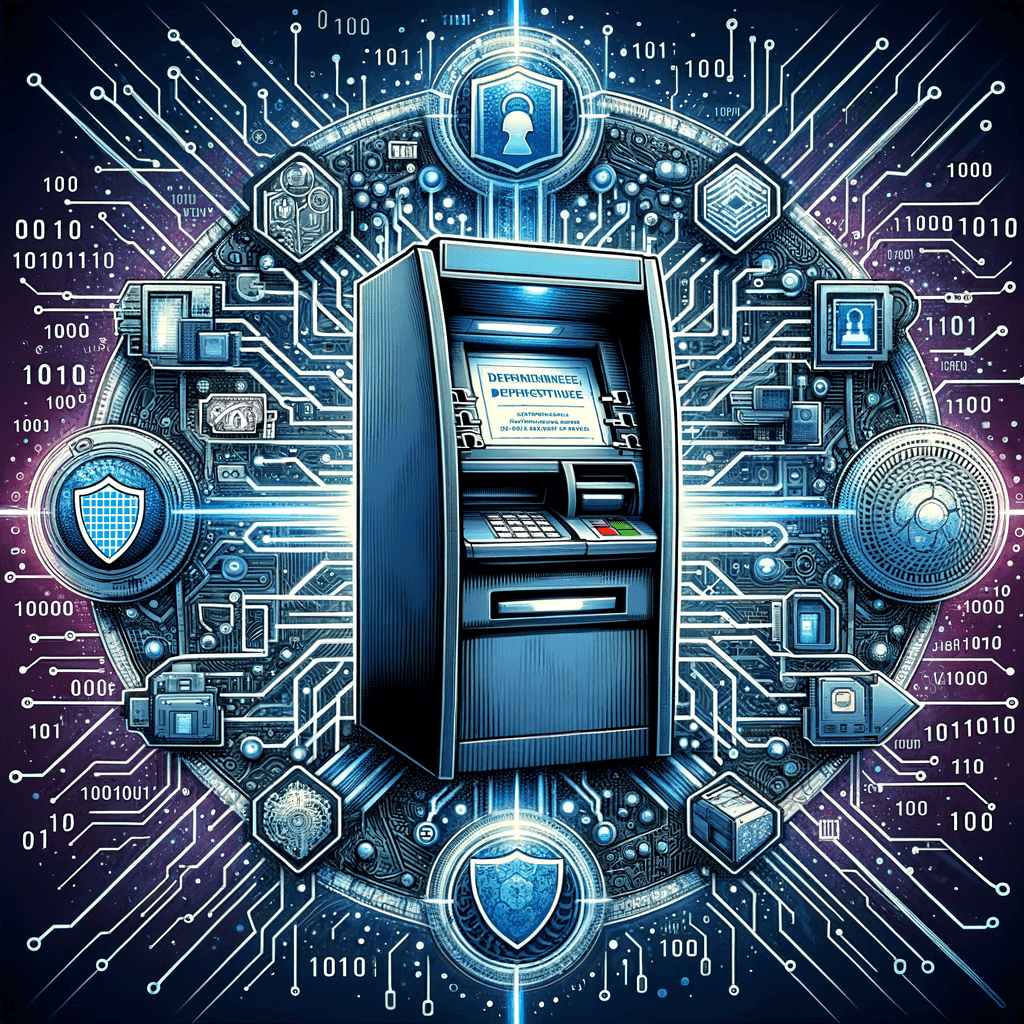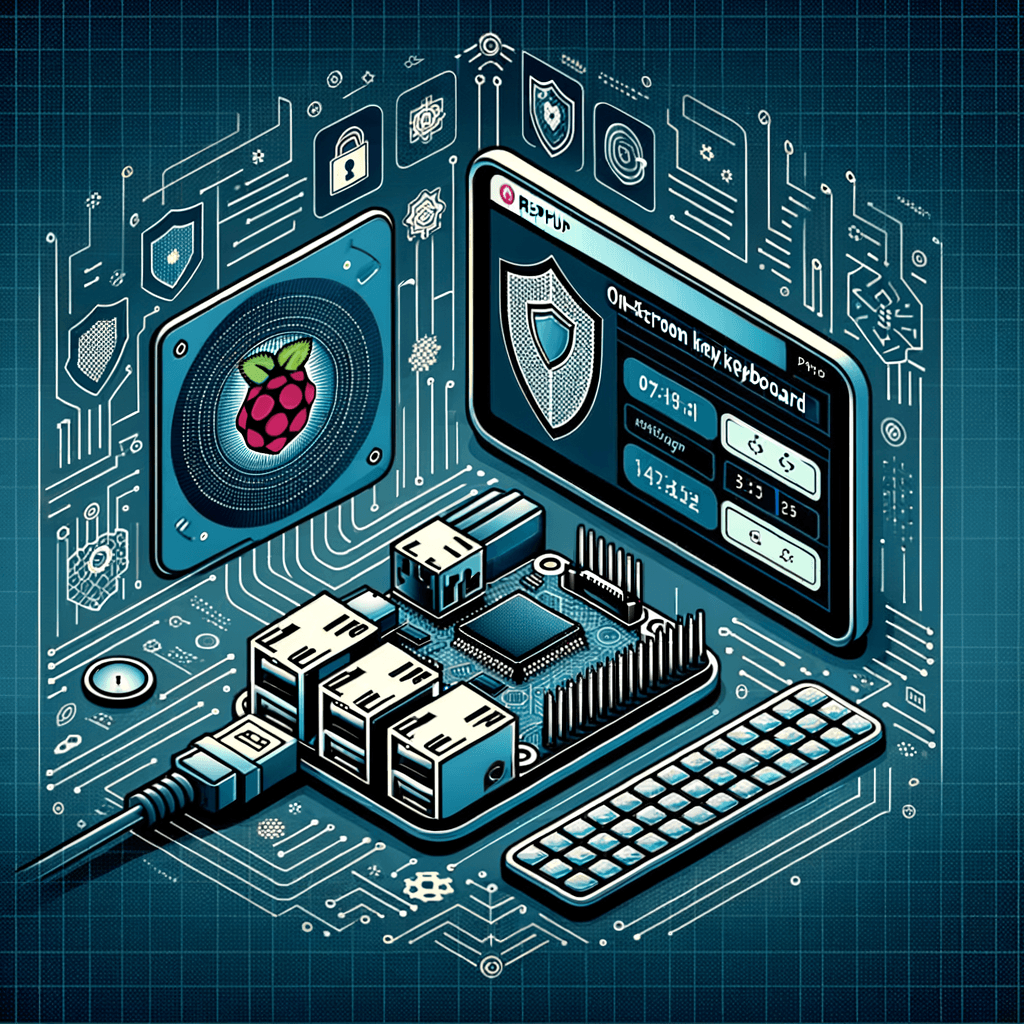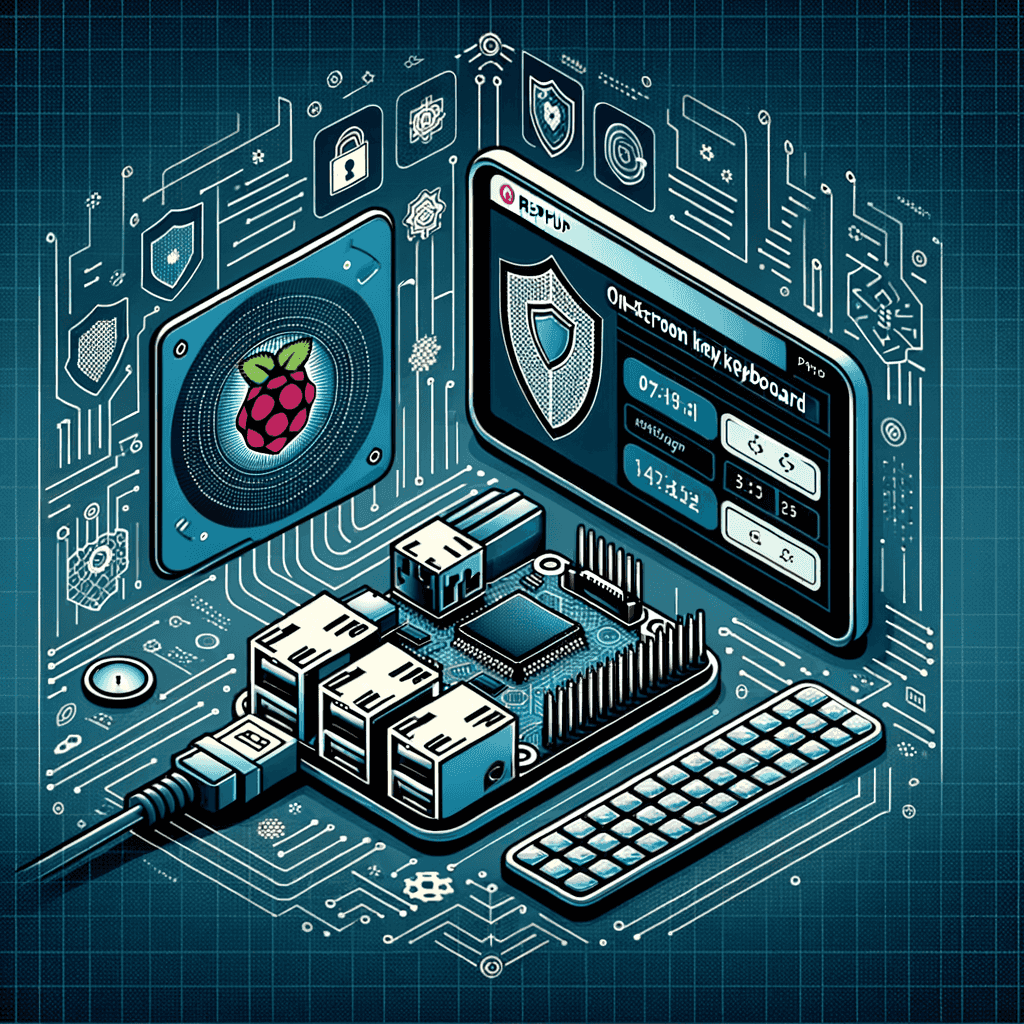- Evolution of ATM Security Solutions
- The Placement and Anchoring of ATM Machines
- Current State of ATM Security (2023)
- Types of ATM Security Solutions
- Key Players in ATM Security Solutions Market
- Future Trends in ATM Security Solutions
- Challenges and Solutions in Implementing ATM Security Measures
- Case Studies of Successful ATM Security Implementations
- Conclusion
- References
Imagine standing at an ATM, the screen glowing as you punch in your PIN. It's a familiar scene, but there's a niggling worry at the back of your mind about your safety and the security of your money. This concern is more common than you might think. Are you aware of how secure your transactions really are at an ATM?
Keeping your money safe at an ATM is all about understanding and using the right security solutions. In the ever-changing world of technology, criminal tactics for stealing your information have become more sophisticated. But don't let this fact scare you. Instead, let it empower you. Because, as threats evolve, so do the measures to counteract them. In this article, we're going to explore the latest and most effective security solutions for ATMs as of 2023.
We'll delve into the advances from their simple beginnings to the complex systems in use today. We'll look at the physical set-up of machines, the cutting-edge technologies that protect your transactions, and the key industry players making your ATM experiences safer. We'll also consider the challenges faced by banks and businesses in implementing these measures and learn from real-life success stories.
So, whether you're a consumer who uses ATMs regularly or a professional involved in the financial sector, keep reading. This is crucial information for anyone who wants to stay a step ahead of ATM security threats.
Evolution of ATM Security Solutions
Let's take a step back in time. In the early days of ATM security, the focus was primarily on physical measures. Locks, alarms, and cameras were the order of the day. These measures were designed to deter criminals and catch them in the act. But they were reactive, kicking into gear only after an incident had occurred.
These traditional measures had their limitations. They were vulnerable to physical attacks such as skimming (where criminals capture card data using a device attached to the ATM), shoulder surfing (where someone watches as you key in your PIN), and jackpotting (where the ATM is manipulated to dispense all its cash).
Moreover, these measures were not designed to protect against cyber attacks, insider threats, logical attacks, or social engineering attacks. They were also limited in their ability to detect and prevent fraud.
Fast forward to 2023, and the landscape of ATM security has drastically changed. Modern ATM security measures have moved beyond the physical realm. They now include biometric authentication (using your unique physical characteristics, like fingerprints or facial recognition, to verify your identity), secure key management (ensuring that the keys used to encrypt and decrypt your data are kept safe), and advanced surveillance systems.
These modern measures are proactive. They're designed to detect and prevent attacks before they happen. They fortify ATM infrastructure against unauthorized access and fraudulent activities. They use machine learning algorithms to detect and prevent fraud, a significant leap from the capabilities of traditional measures.
Modern ATM security measures also use encryption technologies to protect against cyber attacks. They have access controls to guard against insider threats. They're designed to protect against logical attacks (where the ATM's software is manipulated) and social engineering attacks (where people are manipulated into revealing confidential information).
So, as you can see, the evolution of ATM security solutions has been quite a journey. From simple locks and cameras to biometrics and machine learning, the measures have become more sophisticated, more proactive, and more comprehensive. And as we move forward, they're only set to become even more advanced.
The Placement and Anchoring of ATM Machines
Let's talk about the placement and anchoring of ATM machines. It's a lot like playing a strategic game of chess. Every move matters and can significantly impact the outcome.
Strategic Placement
First up, the importance of strategic placement. The ATM machine should be placed in a well-lit area with high visibility. This isn't just to make it easier for customers to find the machine, but also to deter any potential criminal activity. After all, criminals prefer to operate in the shadows, away from prying eyes.
The machine should also be easily accessible to customers, but not too close to the entrance or exit of the building. You don't want to make it too easy for a thief to grab and dash.
Obstructions are a no-no. The machine should be free from any objects or structures that could provide cover for criminals. And it should be kept at a safe distance from any windows or doors that could be used to gain entry into the building.
Anchoring
Now, let's talk about anchoring. This is where the machine is secured to the floor or wall using a high-strength anchor bolt or chain. This isn't just to keep the machine in place, but also to prevent theft.
The machine should also be placed in a location that is monitored by security cameras. This adds an extra layer of security and can deter potential criminals.
And of course, the machine needs to be easily accessible to maintenance personnel for regular maintenance and repairs.
Other Considerations
But it's not just about deterring criminals. The machine should also be placed away from areas where large crowds gather, such as near a stadium or concert venue. It should also be kept away from areas with a high risk of natural disasters, vandalism, theft, violence, or traffic accidents.
So, as you can see, the placement and anchoring of ATM machines is a strategic game. It's about finding the perfect balance between accessibility for customers and security against potential threats.
Current State of ATM Security (2023)
Let's dive into the current state of ATM security in 2023. It's a bit like a spy movie, with high-tech threats, innovative defenses, and a constant game of cat and mouse.
Overview
ATM security in 2023 is a hot topic. With the global ATM security market expected to reach a whopping $32.4 billion by 2032, it's clear that financial institutions are taking this seriously. And why wouldn't they? The threats are real and they're evolving.
Common Threats
Physical attacks, like the good old-fashioned break-in, are still a problem. But the digital threats are getting smarter and more advanced. We're talking about things like black boxes, ATM malware, and other insidious technologies. They might not be as visible as a smashed ATM, but they're just as damaging.
Impact of COVID-19
The COVID-19 pandemic has also had an impact on ATM security. As transaction levels return to pre-COVID numbers, financial institutions are carefully examining how they use their ATMs. Cash recycling is a big trend, with banks looking at tools like configurable cassettes and recycling software.
Software Security
But it's not all about the hardware. Software security is also a big focus. One simple method is to make sure the ATM’s software is up to date. It sounds simple, but it's an effective way to protect against threats.
Interactive Teller Machines (ITMs)
And then there's the controversial topic of Interactive Teller Machines (ITMs). They're a bit like ATMs, but with a live video connection to a teller. Some people love them, some people hate them. But one thing's for sure, they're part of the conversation.
The Future
Finally, let's talk about the impact of COVID-19. The pandemic has changed the way we do a lot of things, and ATM use is no exception. Cash withdrawals are leveling off, but cash deposits are on the rise. And banks are adjusting their ATM strategy to deliver "hyper-personalization", with personalized offers and easy, digital-first ways to open and onboard accounts.
So, that's the state of ATM security in 2023. It's a constantly evolving landscape, with new threats and innovative solutions. But one thing's for sure, it's never been more important to stay one step ahead.
Types of ATM Security Solutions
Let's talk about the types of ATM security solutions. They're a bit like the layers of an onion, each one adding a bit more protection.
First up, physical security solutions. These are the things you can see and touch. Surveillance cameras are the eyes of the ATM, keeping a watchful gaze on the area and recording any suspicious activity. Then there are locks and safes, the tough guys of the ATM world. They're there to protect the cash inside the ATM.
Next, we have anti-skimming devices. These are like the secret agents of the ATM world, working undercover to prevent skimming attacks. And let's not forget about ATM machine alarms. They're the loudmouths of the group, ready to alert authorities at the first sign of trouble.
But it's not all about the physical stuff. Digital security solutions are just as important. Encryption is like a secret code, securing the communication between the ATM and the bank’s servers. Biometric authentication is a bit like a high-tech bouncer, using things like fingerprints or facial recognition to verify the identity of the user.
Anti-malware software is the digital equivalent of a security guard, protecting the ATM from malware attacks. Jitter technology is a bit like a digital smoke screen, disrupting network-based attacks by making the data harder to read. And finally, regular software updates are like a health check, patching security vulnerabilities and keeping the ATM in tip-top shape.
So, there you have it. A range of physical and digital security solutions, all working together to keep ATMs safe and secure. It's a bit like a superhero team, each member bringing their own unique skills to the fight against crime.
Key Players in ATM Security Solutions Market
Let's dive into the key players in the ATM security solutions market. Think of this as the who's who of ATM security.
First, we've got the major companies. These are the big dogs, the ones that have been around the block a few times. Diebold Nixdorf, NCR Corporation, and Fujitsu Limited are just a few names you might recognize. They offer a range of security solutions for ATMs, from physical safeguards to digital defenses.
Then there's GRGBanking, Hitachi-Omron Terminal Solutions, and KAL ATM Software. These guys are also major players, providing a variety of security solutions for ATMs. And let's not forget about TMD Security, Transtrack International, and Auriga. They're leading the pack too, with a range of ATM security solutions up their sleeves.
But it's not just about the big guys. There are also some emerging startups making waves in the ATM security solutions market. Nixu Cybersecurity and S21sec are two such companies, offering innovative security solutions for ATMs.
And of course, we can't forget about the role of government and regulatory bodies. They're like the referees of the ATM security world, setting the rules and making sure everyone plays fair. The Payment Card Industry Data Security Standard (PCI DSS), the European Central Bank (ECB), the Reserve Bank of India (RBI), and the National Institute of Standards and Technology (NIST) are all involved in setting standards for ATM security.
So, there you have it. A mix of major companies, emerging startups, and regulatory bodies, all playing a crucial role in the ATM security solutions market. It's a diverse group, but they all have one thing in common: they're committed to keeping ATMs safe and secure.
Future Trends in ATM Security Solutions
Now, let's talk about the future. It's always exciting to think about what's coming next, isn't it? In the world of ATM security solutions, there are a few trends that are worth keeping an eye on.
First up, we've got AI and machine learning. These technologies are like the Sherlock Holmes of ATM security. They can analyze patterns, spot anomalies, and help prevent all kinds of fraudulent activities. Skimming attacks? Cash-out attacks? Jackpotting attacks? Card skimming attacks? AI and machine learning are on the case.
Next, there's blockchain technology. This is like a super secure, tamper-proof ledger for ATM transactions. It can create a secure and transparent audit trail, a secure and efficient payment system, and even a secure and efficient identity verification system. Plus, it can help manage ATM software updates and patches. Pretty cool, right?
And then there's the Internet of Things, or IoT. This technology can be used to monitor and manage ATMs remotely. No more need for physical maintenance! It can also keep an eye on the physical security of ATMs, detect tampering or unauthorized access, and even monitor the environmental conditions around ATMs. And let's not forget about network traffic. IoT can keep tabs on that too, helping to detect and prevent cyber attacks.
So, there you have it. AI and machine learning, blockchain technology, and IoT are all set to play a big role in the future of ATM security solutions. It's an exciting time to be in the industry, that's for sure!
Challenges and Solutions in Implementing ATM Security Measures
Alright, let's dive into some of the challenges that come with implementing ATM security measures, and how we can tackle them head-on.
ATM Skimming: This is when bad guys try to steal card data using a fake card reader. But don't worry, we've got a solution for that. Anti-skimming devices, like card readers that are embedded in the machine, can help keep our card data safe and sound.
ATM Jackpotting: This is when hackers try to make the ATM spit out cash like a slot machine. But again, we've got a solution. Software that can detect and prevent malware attacks can help keep our cash where it belongs - in the ATM.
Physical Attacks: Physical attacks on ATMs are another challenge. But we can tackle this one with security cameras, alarms, and access control systems. These can help deter would-be thieves and catch them in the act if they do try anything.
Cybersecurity: Cybersecurity is a big concern for ATMs. But we can fortify our ATMs with the latest software updates and security reinforcements. This can help keep our ATMs safe from cyber attacks.
Cash Management: Cash management can be a bit of a headache. But tools like configurable cassettes and recycling software can help make it a breeze. Plus, integrated channel services can help make transaction processing smoother and more interactive.
Personalization: Personalization is another challenge. But we can tackle this one with "hyper-personalization", like targeted offers that make the ATM experience feel as good as being at the teller. And we can use integrated channel services to get a better understanding of our customers.
Simplicity and Convenience: We need to provide easy, digital-first ways to open and onboard accounts. And while cash withdrawals are leveling off, cash deposits are on the rise. This means we need to be ready to handle more deposits at our ATMs.
Self-Sufficiency: Self-sufficiency is becoming more important for financial institutions. And while ITMs (Interactive Teller Machines) are a bit controversial, some see them as the future of ATMs.
DMA Attacks: Finally, we need to be aware of DMA (Direct Memory Access) attacks and other ATM security vulnerabilities. But by understanding these challenges and how to solve them, we can help strengthen our ATM cybersecurity efforts.
So, while managing bank and ATM security can be challenging, it's definitely not impossible. We've got this!
Case Studies of Successful ATM Security Implementations
Alright, let's take a look at some real-life examples of how banks have successfully implemented ATM security measures.
Case Study 1
Bank of America: They went all in on biometric authentication to secure their ATMs. This means that instead of just using a card and PIN, customers also have to verify their identity using something unique to them, like their fingerprint.
Wells Fargo: They introduced a cardless ATM system that uses one-time codes to authenticate transactions. This means that even if someone gets hold of your card, they can't use it without the code.
JPMorgan Chase: They tackled the problem of ATM skimming head on. They installed anti-skimming devices on their ATMs to prevent card skimming. This means that if someone tries to use a fake card reader, the machine won't read the card.
Citibank: They went high-tech with their solution. They implemented a real-time fraud detection system that uses machine learning algorithms to detect fraudulent transactions. This means that the system can learn from past transactions to spot suspicious activity.
HSBC: They took advantage of the rise of smartphones. They introduced a mobile app that allows customers to withdraw cash from ATMs without using a card. This means that even if you forget your card, you can still get cash.
TD Bank: They focused on facial recognition. They installed cameras on their ATMs that use facial recognition technology to authenticate transactions. This means that the machine can verify your identity by looking at your face.
PNC Bank: They also took advantage of smartphones. They implemented a system that allows customers to use their mobile phones to authenticate transactions. This means that you can use your phone as a kind of digital key.
Capital One: They went with voice recognition. They introduced a system that uses voice recognition technology to authenticate transactions. This means that the machine can verify your identity by listening to your voice.
US Bank: They installed ATMs that use near-field communication (NFC) technology to authenticate transactions. This means that you can use your phone or a special card to make transactions without having to insert your card into the machine.
Case Study 2
Bank of America: They didn't stop at biometrics. They also implemented a system that uses artificial intelligence (AI) to detect and prevent ATM fraud. This means that the system can learn from past transactions to spot suspicious activity.
Wells Fargo: They also used machine learning in their solution. They introduced a system that uses machine learning algorithms to detect and prevent ATM fraud. This means that the system can learn from past transactions to spot suspicious activity.
JPMorgan Chase: They used big data to their advantage. They installed a system that uses big data analytics to detect and prevent ATM fraud. This means that the system can analyze huge amounts of data to spot patterns and trends.
Citibank: They used blockchain technology to secure their ATMs. This means that transactions are recorded in a way that can't be changed or tampered with.
HSBC: They also used biometric authentication in their solution. They introduced a system that uses biometric authentication to secure their ATMs. This means that customers have to verify their identity using something unique to them, like their fingerprint.
TD Bank: They used machine learning in their solution. They installed a system that uses machine learning algorithms to detect and prevent ATM fraud. This means that the system can learn from past transactions to spot suspicious activity.
Conclusion
Recap of ATM Security Solutions in 2023
So, what have we learned about ATM security solutions in 2023? Well, we've seen that banks are getting creative with their solutions. They're using everything from biometrics and machine learning to blockchain and big data to keep their ATMs secure. And it's not just about preventing fraud. Banks are also using these technologies to make transactions more convenient for their customers.
Future Outlook
Looking ahead, it's clear that ATMs are at a crossroads. Banks are rethinking their strategies and looking at ways to make their ATMs more personalized. This means that we can expect to see more features like personalized offers and integrated channel services.
Cash recycling is also set to be a big trend. This could mean that we'll see more ATMs equipped with cash recycling tools like configurable cassettes and recycling software.
Interactive Teller Machines (ITMs) are a bit of a controversial topic. Some people think they're the future of ATMs, while others aren't so sure. But one thing's for sure - they're definitely something to keep an eye on.
Security will continue to be a major focus. With the banking landscape being so fragmented, ATMs are vulnerable to hacking. This means that banks will need to keep investing in security solutions to keep their machines safe.
And finally, we can expect to see more banks using footfall tracking. This can help them optimize their staffing and resources, and provide a better service to their customers.
So, there you have it. That's a quick look at where ATM security solutions are at in 2023, and where they're headed. It's an exciting time to be involved in this industry, and I can't wait to see what the future holds.
References
Video surveillance is a key player in the fight against ATM fraud and theft. It's not just about having cameras in place, but about using intelligent video systems that can detect suspicious behavior, recognize faces, and even read license plates. These systems use artificial intelligence and machine learning to keep ATMs secure. And with cloud recording and big data, banks can store vast amounts of video data, detect trends, and access images remotely at any time.
The PCI Security Standards Council is another important resource. They provide security guidelines for ATMs, taking into account the protection that can be provided by both the hardware and software of the ATM against attacks aimed at compromising sensitive data. They also have an Information Supplement on ATM Security Guidelines that provides additional information on this topic.
Diebold Nixdorf's blog post on ATM Security Management is a must-read. It gives insights into how to manage ATM security in a world where risks have evolved and the self-service channel has become more complex. It highlights the importance of locking down interconnected channels and varying defensive considerations.
And finally, banks are getting creative with their ATM strategies. They're using personalized offers and integrated channel services to make their ATMs more customer-friendly. Cash recycling is also becoming a big trend, with more and more ATMs being equipped with cash recycling tools.
Remember, awareness campaigns are crucial in reducing ATM security crimes and protecting financial security. So, let's keep the conversation going and continue to work together to make ATMs safer for everyone.









